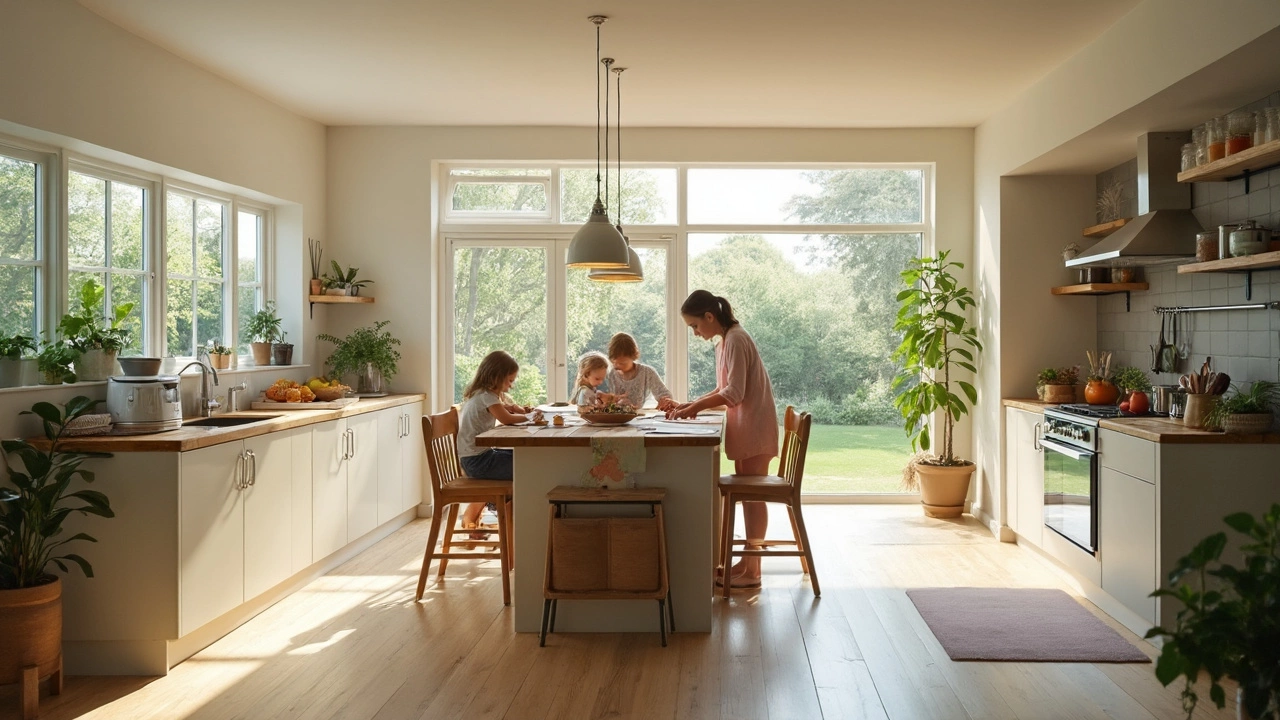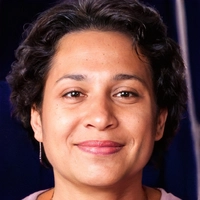Ever wonder why some kitchens just seem easier to cook in? It's not magic—it's all about the layout. Picking the right setup can mean the difference between breezing through dinner prep or bumping into counters every five seconds. Even the fanciest appliances won't matter much if your kitchen is awkward to use.
Forget one-size-fits-all. The best layout depends on how you cook, who you share the kitchen with, and how much stuff you have to store. If you’re always running from the sink to the stove and then to the fridge, you’re not alone. There’s actually a name for this: the work triangle. Ever heard of it? Some swear by it, but there’s more to the story these days—especially with open-concept spaces and big islands trending.
This isn’t about following some design rulebook. It’s about making your kitchen work with your real life. Want to stop tripping over the garbage bin, or always struggling to find that missing spatula? The right layout can fix all of that. Whether you have a tiny galley or a huge open plan, picking the right design will clear the chaos and put everything right where you need it.
- Classic Kitchen Layouts Explained
- The Work Triangle Myth
- Space-Saving Hacks and Layouts for Small Kitchens
- Tips for Customizing Your Perfect Flow
Classic Kitchen Layouts Explained
If you’ve checked out kitchen showrooms or flipped through design magazines, you’ve probably seen the same shapes come up over and over. That’s because certain kitchen layouts just make life easier. Here’s the lowdown on the big hitters:
- Galley Kitchen: Everything’s in a straight line on two parallel walls. It’s ideal for small spaces and keeps everything super reachable. Downside? Not great for more than one cook—things get cramped fast.
- L-Shaped Kitchen: Cabinets and appliances wrap around two walls, forming an L. It easily fits into corners and opens up floor space. This is one of the most popular kitchen design choices, especially for open plans.
- U-Shaped Kitchen: Cabinets on three walls enclose the cook. This setup gives loads of counter space and keeps stuff organized, but you need a good-sized room. Perfect for serious cooks who want everything close but not crowded.
- Island Kitchen: An island in the middle lets you add a spot for chopping, eating, or even another sink. Islands work best in big spaces—but they’re a great way to add useful surfaces and help with flow if you have the room.
- PENINSULA Kitchen: Basically an island stuck to a wall. It gives you extra counter space and divides the room—good for open concepts where you want to mark off the kitchen without a wall.
Each of these kitchen layouts affects how easily you can move between cooking, cleaning, and storing food. And people really do care—a recent survey by Houzz found that 42% of homeowners changed their kitchen layout specifically to improve how the kitchen functions, not just for looks.
| Layout | Best For | Watch Outs |
|---|---|---|
| Galley | Small apartments, one cook | Can feel cramped, tough for families |
| L-Shaped | Open concepts, couples | Corner cabinets get tricky |
| U-Shaped | Lots of storage, big families | Needs more floor space |
| Island | Entertaining, lots of prep space | Room size is a must |
| Peninsula | Dividing kitchen/living, small homes | Can disrupt flow if not planned well |
There’s no perfect answer—your space, your family, and your style matter most. As designer Jenny Komenda puts it,
“The right kitchen layout is the one that fits your life, not just your Pinterest board.”
Focus on how you cook and who uses the kitchen. Once you know what matters most to you—like easy-to-clean counters or lots of space for baking—you can start narrowing down your kitchen layout choices and dodge the mistakes most people regret later.
The Work Triangle Myth
If you’ve watched any kitchen show or chatted with a contractor, you’ve probably heard about the kitchen triangle. This old-school idea maps out the path between your fridge, sink, and stove—built on the logic that these are the spots you visit most, so they should form a triangle for easy movement. The whole thing popped up in the 1940s when kitchens were small and one person did all the cooking. Fast-forward to today, and things have changed.
The triangle still makes sense for some homes, but it isn’t a must-follow rule. People cook in teams, use instant pots and air fryers, and want islands for kids’ homework or big baking projects. Kitchens now often have more than three key work zones, so shoving everything into that triangle shape can create new problems. As designer Susan Serra put it:
“The triangle works as a guide, but real life calls for flexibility—think zones, not sharp angles.”
Here’s what you should consider, instead of obsessing over a perfect triangle:
- Think in zones: Like a coffee station, baking area, or snack spot, so everyone’s not crowding the same spot.
- Plan for storage you actually use—don’t put pots next to the fridge just to keep the triangle tight.
- Leave enough counter space next to any main appliance. Ever try pulling hot food out of the oven with nowhere to set it down? Not fun.
- If you love having people in your kitchen, an island with seating is often way more helpful than a strict triangle.
Research from the National Kitchen & Bath Association shows that more homeowners now divide kitchens into function-based zones, not triangle points. According to their 2024 survey, around 60% of designers say their clients want extra space for prep, cleanup, and entertaining—sometimes all at once. That’s why you see more big islands, prep sinks, or separate beverage coolers popping up in modern kitchen design.
Bottom line: The kitchen triangle can help jumpstart your layout, but don’t twist your space to fit the rule. Build around your daily habits and your family’s needs. The best kitchen layout is the one that actually makes cooking and hanging out easier for you, not for some rulebook from 1945.

Space-Saving Hacks and Layouts for Small Kitchens
Small kitchens can feel cramped fast, but there’s good news: the right layout and a few clever moves can totally change the game. Galleys, L-shapes, and even U-shaped designs work well in tight spots, but it’s more about how you use the space than the shape itself. Kitchen layout comes down to smart storage and making every inch count.
One of the best tricks is to build up, not out. Go vertical with wall storage, like tall cabinets or open shelves. Put hooks or magnetic strips on your backsplash for knives and utensils—stuff you use all the time shouldn’t be buried in a drawer. Look for cabinets with pull-out racks or shelves inside, so you can grab what you need without digging to the back.
- Pull-out pantries: If you don’t have space for a big pantry, slim pull-outs fit into gaps between cabinets or beside the fridge and hold a surprising amount.
- Corner drawers: Forget those hard-to-reach corner cabinets. Special drawers designed on an angle make every bit of that space usable.
- Rolling carts or trolleys: No room for an island? A small wheeled cart gives you extra counter space and storage you can move around or tuck away.
- Fold-down tables: Need a spot to eat or prep food? A wall-mounted table flips down when you need it, then out of the way when you don’t.
- Toe-kick drawers: That little space beneath your lower cabinets can be turned into hidden drawers for flat pans, trays, or even pet bowls.
Ever notice how drawers work better than cabinets in tight spots? Deep drawers under the counter keep pots and pans at your fingertips. In fact, a 2023 survey by Houzz found that 73% of homeowners upgrading a small kitchen choose drawers over doors because they actually fit more—no more forgotten Tupperware at the back.
| Layout | Best For | Biggest Benefit |
|---|---|---|
| Galley | Super small or apartment kitchens | Maximizes counter space along two walls |
| L-shaped | Open-plan or corner spaces | Open traffic flow, leaves room for dining |
| U-shaped | Narrow but wider rooms | Most storage and work surfaces per square foot |
If you want your kitchen design to work hard in a tiny space, skip bulky stuff like double ovens or oversized islands. Focus on essentials, keep clutter off your counters, and remember—good lighting makes cramped kitchens feel bigger. Under-cabinet strips or puck lights are easy to install and won’t eat up space.
Don’t be afraid to mix in furniture that does double duty, like benches with storage underneath or even a cutting board that fits over your sink. In small kitchens, every bit of space matters—and a few smart choices make a huge difference.
Tips for Customizing Your Perfect Flow
If you want your kitchen to feel like it was made just for you, don’t just copy someone else’s setup. Instead, focus on how you move, cook, and live in your own space. Your kitchen layout should fit your habits, not the latest trend on social media.
Start by thinking about your daily routines. Do you cook alone, or are you sharing the kitchen with family? If more than one person is cooking, make sure there’s enough space so nobody gets in each other’s way. An island with seating might work for quick breakfasts, but it can also block traffic if it’s too big or placed awkwardly.
Here are some practical steps for customizing your kitchen design to work better for your needs:
- Zone your kitchen. Keep your main tools and ingredients close to where you use them. Put pots and pans near the stove, cutting boards by the prep area, and dish soap by the sink. It cuts down on unnecessary steps.
- Maximize storage. Use pull-out cabinets, lazy Susans for those weird corner spaces, and drawer dividers to keep utensils in check. Most people underestimate how much storage they need. One study in 2023 found 60% of homeowners regretted not adding enough storage space during a remodel.
- Light it right. Good lighting can change everything. Go for a mix of overhead lights and task lighting under shelves or cabinets. It makes cooking safer and more comfortable.
- Plan traffic routes. Make walkways at least 36 inches wide. This is especially helpful in busy households. If you’re working with a galley kitchen, try to keep the path clear of open dishwasher or fridge doors.
- Think vertically. Open shelves, hooks, and magnetic strips for knives free up drawers and keep things handy without clutter.
If you want a bigger-picture view, here’s a quick table showing how different kitchen layout styles support various needs:
| Layout Style | Best For | Watch Out For |
|---|---|---|
| Galley | Small spaces, efficiency | Can feel cramped, not ideal for multiple cooks |
| L-Shaped | Open flow, flexible placement | Corner cabinets can be tricky to access |
| U-Shaped | Lots of counter and storage | Easy to crowd if space is tight |
| Island | Entertaining, extra prep area | Needs room – don’t overcrowd |
The right kitchen layout takes these pieces and fits them together based on your real life. If you use your kitchen for baking, think about where you’ll put mixers and baking pans. Into meal prep? Set aside a counter for chopping and assembling. Not into cooking at all? Focus on pantry space and easy cleaning.
Bottom line: pay attention to the little stuff that bugs you now, and design around it. That’s how you end up with a kitchen design that truly fits you. Not just pretty for pictures, but smart for real life.
 EN
EN
 HR
HR
 AR
AR

